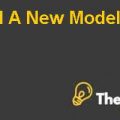Facts Surrounding the Case
Pride Industries came into existence in the year 1966 in the United States. The founders of the company were the parents that had gathered in the basement of a church in Auburn and it was their imagination and creation along with a completely different vision which had led to the creation of this prosperous company with a strong social motive. The motive for beginning this organization as a nonprofit making organization was to provide the working opportunities to the disable adult children that had no other options.
This company came with a mission through which all these disable members of the society could form a productive part of their society and contribute to its well being. This philosophy emerged in the minds of all the parents because the number of the people with disabilities was rising significantly in the United States with about 1 disable person in every 5 and two-thirds of all those disable people were unemployed who wanted to work to serve their society.
The core mission of Pride Industries was to create job opportunities in the market for people with sensory, emotional, physical, intellectual and cognitive disabilities. Over the years, the company had grown significantly into a much large business of its industry and many diverse business areas have been entered by Pride Industries. These diverse business areas included the supply chain, manufacturing, distribution and the facilities services solutions to all the government agencies and the business around the world.
The pride industry also had a subsidiary with the name Pride Industries One. All those contracts that related to those employees that were having strict disabilities in terms of federal state definition were performed by Pride Industries whereas all the remaining contracts were completed by its subsidiaries and all of its employees had wide range of disabilities. The Pride Company was composed of two major business units and these were the Integrated Facilities Services and the Manufacturing & Logistics Services.
The Manufacturing and Logistics Services division provided contract manufacturing services to the original electronics manufacturers while, the first division provided the private and public sector customers with full line of facilities services. Among the total 4700 workforce of the company, 2600 were employees were those that had disabilities. This made Pride Industries one of the largest non-profit employers of United States.
Pride Industries Case Solution
Key Issues
A request of $2.6 million has been made by Pride Industries for the capital appropriation. The company wanted to make this investment in the new technology because it wanted to replace the older electronic surface mount technology. More capable, advanced and new machinery was the core need of the company at the moment.
One important thing where the company had to maintain a trade off was that Pride is a non-profit organization and it is working for the welfare of the society by providing jobs to those people that are severely disable or have multiple disabilities. Pride is creating many new job opportunities for these workers. On the other hand, the company wanted to assess the proposed capital expenditure in order to earn reputation as well as business, which is measured by the three core universal measures that are sought by any customer which are delivery, quality and the price.
The company wanted to achieve this all and still maintain the social mission which the company had always emphasized upon as its core base of the company’s foundation. The projection for the proposal had been made by the analysts and the management of the company and it looked good and well suited to the future of the company. The investment in the new technology and equipment was the only way to attract new business for the future years, grow the revenues at a rate of about 20% and keep the current electronic manufacturing services customers satisfied and happy.
However, apart from the quantitative analysis of the capital expenditure that had been proposed, there were also many other factors that needed to be considered before an investment needed to be made in the SMT. One of the other significant factor which could influence the capital expenditure request was the trend of the manufacturing sector in the United States and all the other low wage countries where the opportunities as well as the risks were both high. Most of the evidence however, had suggested that a large part of the manufacturing was returning back to United States and onshore manufacturing was being promoted. Pride Industries was a ‘Made in America’ company and therefore, it needed to also analyze the impact of the on shoring on the investment in the new SMT. .......................













